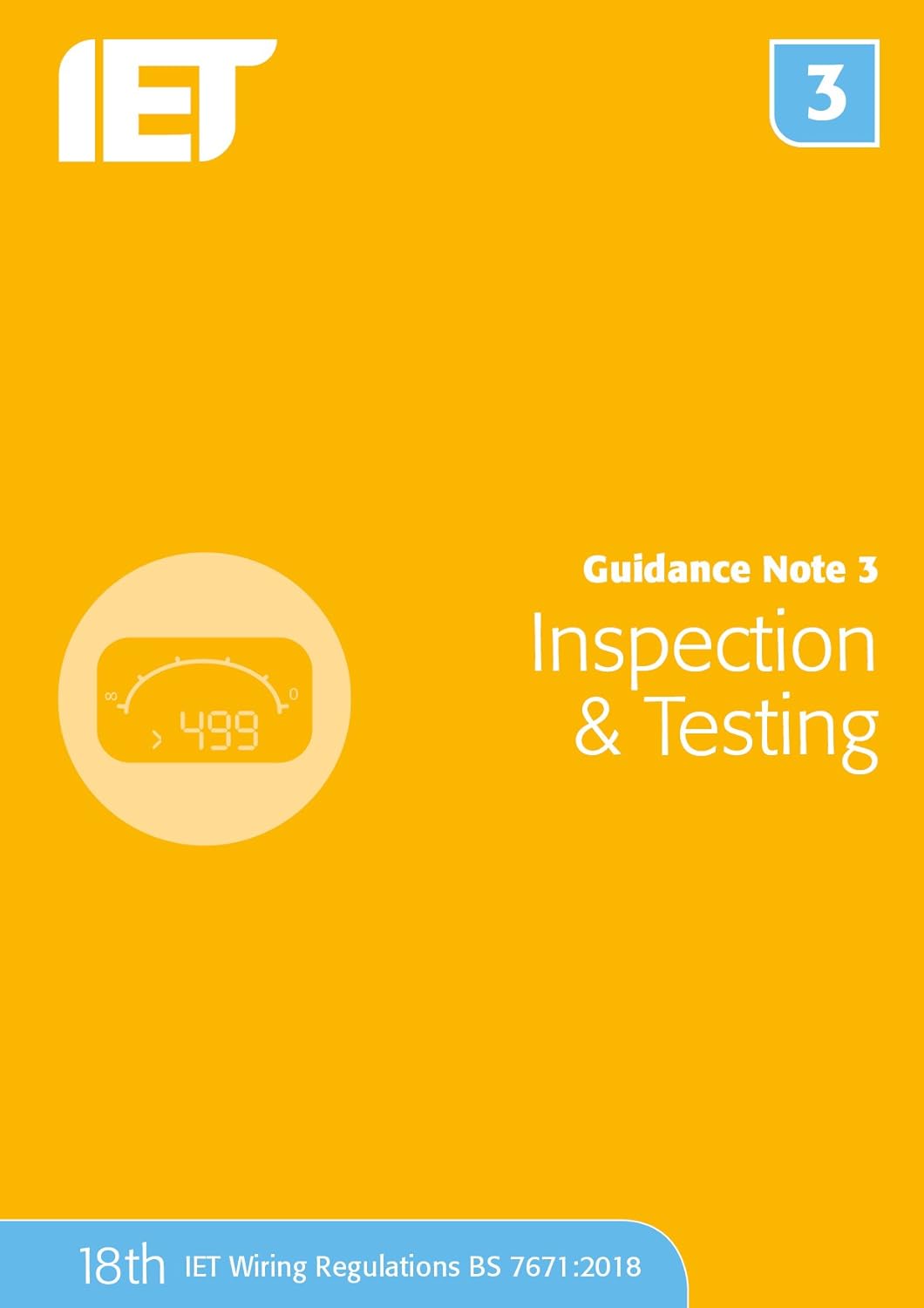About this deal
Rewireable or semi-enclosed fuses to BS 3036 as they are referred to in BS 7671:2018+A1:2020, are indeed still permitted providing the appropriate correction factor (0.725) is used when determining the size of the conductor. In fact, Table 533.1 identifies the sizes of tinned wire for use in semi-enclosed fuses. And now the part of the resistance of the street main, and the real external voltage, will depend on other user's loads, and may change without warning if the DNO needs to change a transformer or make a repair to cables in the street. Inspection of fire alarm and emergency lighting systems do not generally form part of an EICR. However, power supplies and wiring of emergency lighting systems will be part of the fixed wiring installation and should be included.
I would like to express my great appreciation to the following individuals for their valuable contributions to this article.
Electrician’s Guide to the Building Regulations, 6th Edition
However, these answers need to be presented in written prose, so will take a substantially longer time to craft than multiple-choice responses. Furthermore, responses need to be well-structured and flow smoothly, so there needs to be an element of preparation time also factored in. Delegates will be expected to incorporate relevant electrotechnical terminology in their answers. This should be extracted from both pieces of literature referenced earlier (IET wiring regulations and Guidance Note 3). However, this is a closed-book exam, and therefore candidates will not be permitted to refer to these during the test. There is a large element of "measure with a micrometer, mark in chalk, cut with an axe" about the decision about what is an acceptable Zs level for a given breaker anyway, in the sense it is a very accurate calculation of something that does not happen - for example if faults actually were zero resistance, they would not actually dissipate any energy and would not get hot - as I'm sure you realise looking at any burnt end will confirm this is not the case ?. Measurements on a ring final circuit wired with 2.5/1.5 mm 2 twin and earth cable shows very little change in instrument readings at each test point around the ring, even for the longest circuit lengths meeting voltage drop criteria. There is very little distinguishable change in the instrument reading during the test. As the difference in cross-sectional area between live conductors and cpc increases, the difference becomes more noticeable. With longer ring final circuits wired in 4.0/1.5 mm 2 twin and earth cable, the readings no longer appear approximately the same at each point on the ring, and differences in instrument readings become more noticeable. BS EN 62423:2012+A11:2021 Type F and type B residual current operated circuit-breakers with and without integral overcurrent protection for household and similar uses. It is not normally necessary to inspect and test every single circuit, point and accessory within the installation due to the size and the costs that may be involved. However, you should inspect and test enough of the installation to be able to form an educated opinion on its overall condition.
I suggest you go and measure Zs on a real system with a real meter early in the morning, then go out for lunch and polish the meter probes and re-test with the same meter at the same point in the afternoon. The two readings will be both as valid, but are unlikely to be the same in all digits. As an aside what meters do you suggest with this accuracy (not precision) ? Note that two half lengths of meter lead is a good few milli-ohms on its own. I have used both Fluke and Meggar machines and neither is this good.
Set the multimeter to the kΩ range (if not auto-ranging), and measure resistances at the test points shown above, which mirror the test points in the earlier example.
This is where knowledge of relevant product standards is essential, it would be reasonable to expect a 40 ms maximum disconnection time for a test at five times I Δn as would be the case with an AC test. However, this is not the case as the product standard BS EN 61008 requires a half wave pulsating residual current of 0.35 A (350 mA), see Table 4 extracted from BS EN 61008-1:2012+A2:23-1:2012+A11:2015.
What is an alternating current test?
For further information on the different RCD Types and the selection process, see IET Wiring Matters article (Issue 77 September 2019), ‘Which RCD Type?’ Review of continuity of protective conductors, including an evaluation on condition of protective bonding. Predicted measured resistance = r y//r g = 0.5013×0.5013 ÷ (0.5013+0.5013) = 0.2507 Ω Step 3, resistance at Test Point 5 Working the other way, no breaker is made spot on the limit of the breaking range, so when we assume 20 times the rating for a D type, we are being unduly pessimistic, on average one out of the box will be more like 15. But that may vary with batch and the age of the breaker, as the moving parts oxidise and get a bit stiffer. Regulation 621.5 of BS 7671 requires: “ Periodic inspection and testing shall be undertaken by a skilled person or persons, competent in such work”. BS 7671 defines a skilled person (electrically) as a “ person who possesses, as appropriate to the nature of work being undertaken, adequate education, training and practical skills, and who is able to perceive risks and avoid hazards which electricity can create”.
Related:
 Great Deal
Great Deal 